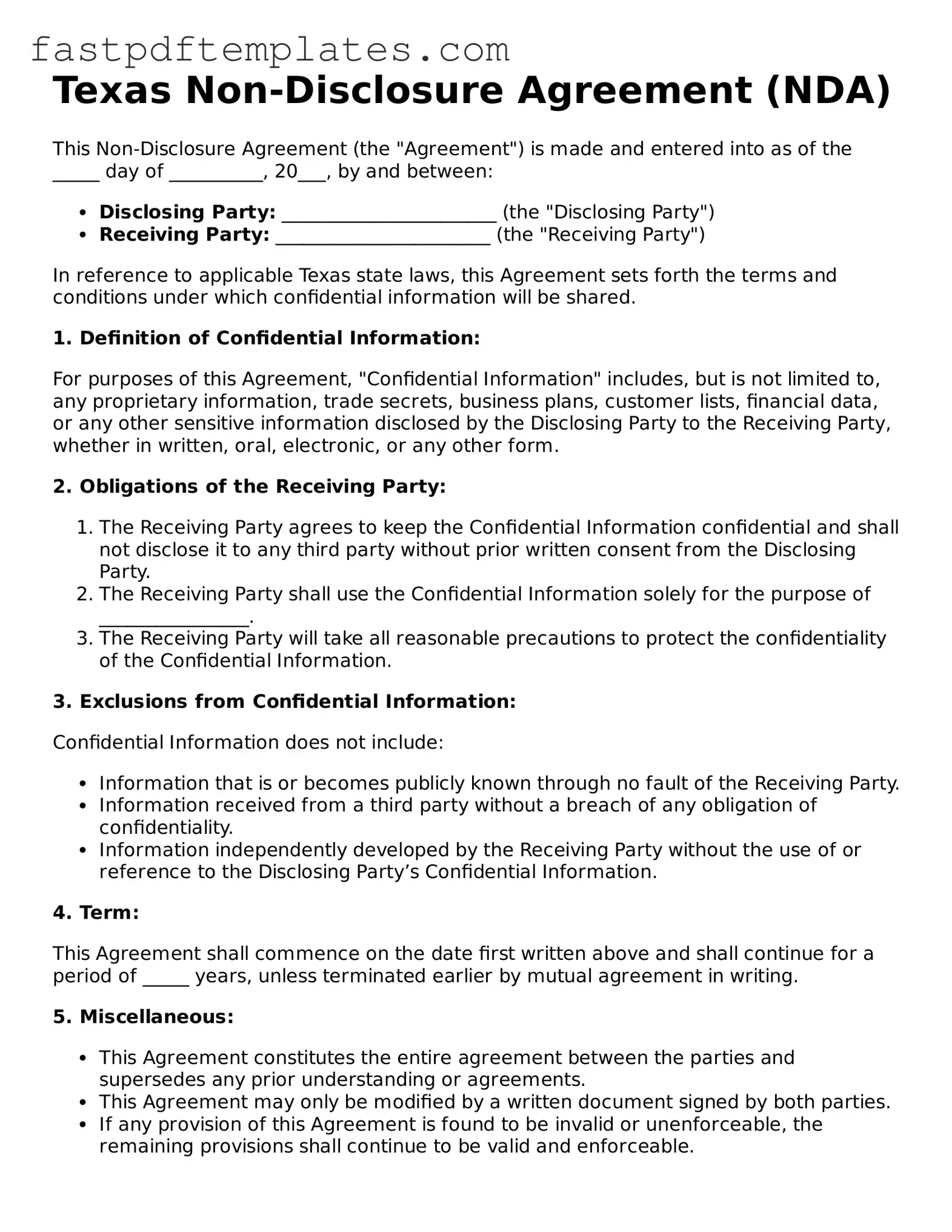A Non-Compete Agreement is a legal document that restricts an individual from engaging in business activities that compete with their employer after leaving the company. Like a Non-Disclosure Agreement (NDA), it aims to protect sensitive information and trade secrets. Both documents require the signing party to maintain confidentiality, but a Non-Compete Agreement goes further by limiting the individual's ability to work in similar industries for a specified period and within a defined geographical area.
A Non-Solicitation Agreement prevents an individual from soliciting clients or employees of a business after their relationship with the company ends. Similar to an NDA, it focuses on protecting the business’s interests and confidential relationships. While an NDA primarily deals with the sharing of sensitive information, a Non-Solicitation Agreement addresses the potential harm caused by poaching clients or staff, ensuring that the business can maintain its client base and workforce.
An Employment Agreement outlines the terms of employment between an employer and an employee. It often includes clauses related to confidentiality and non-disclosure, making it similar to an NDA. While an NDA specifically addresses the handling of confidential information, an Employment Agreement encompasses a broader range of employment terms, including job responsibilities, compensation, and termination conditions.
A Partnership Agreement is a contract between business partners that outlines the terms of their collaboration. Like an NDA, it may include confidentiality provisions to protect proprietary information shared among partners. Both documents aim to ensure that sensitive information is not disclosed to outsiders, but a Partnership Agreement also covers aspects such as profit sharing, decision-making processes, and dispute resolution among partners.
A Licensing Agreement allows one party to use the intellectual property of another under specific conditions. Similar to an NDA, it often includes clauses that protect confidential information shared during the licensing process. While an NDA focuses solely on confidentiality, a Licensing Agreement also defines the scope of use, payment terms, and duration of the license, providing a more comprehensive framework for the use of intellectual property.
A Confidentiality Agreement is closely related to an NDA and serves a similar purpose: to protect sensitive information from being disclosed. Both documents require parties to keep shared information private. However, a Confidentiality Agreement may be broader in scope and can be used in various contexts, including business transactions, employment, and legal proceedings, whereas an NDA is often more specific to particular situations or relationships.
A Service Agreement outlines the terms under which services will be provided between parties. It can include confidentiality clauses similar to those found in NDAs. Both documents aim to protect sensitive information shared during the course of a business relationship. However, a Service Agreement typically includes details about the services rendered, payment terms, and responsibilities, in addition to confidentiality provisions.
A Franchise Agreement governs the relationship between a franchisor and a franchisee. It usually contains confidentiality clauses to protect the franchisor’s proprietary information and trade secrets. Like an NDA, it ensures that sensitive business information remains confidential. However, a Franchise Agreement also includes terms related to the use of the franchisor's brand, operational guidelines, and financial arrangements, making it more comprehensive than a standard NDA.
A Settlement Agreement is a contract that resolves disputes between parties. It may include confidentiality clauses to prevent the disclosure of the terms of the settlement. Similar to an NDA, it seeks to protect sensitive information that could harm either party if disclosed. However, a Settlement Agreement typically focuses on resolving specific legal disputes and outlines the terms of the resolution, including any compensation or actions required by either party.
